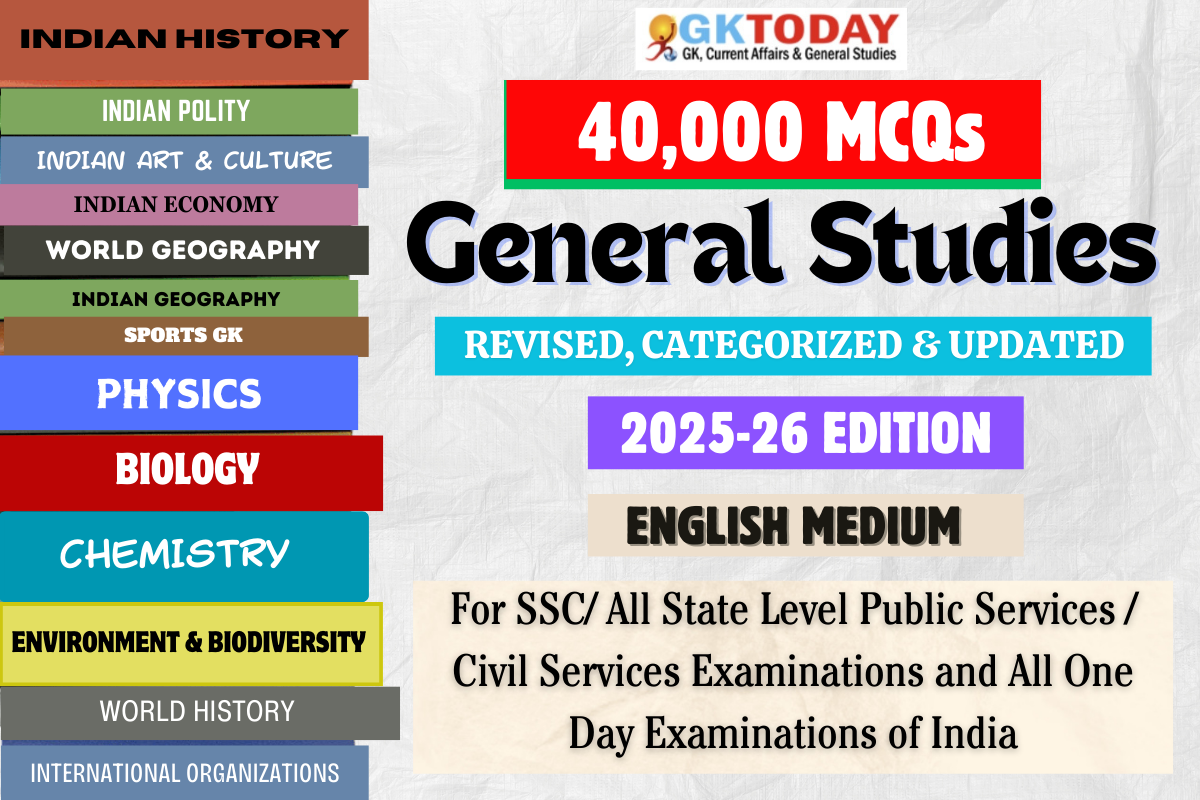Modern Indian History MCQs
Multiple choice questions on Modern Indian History & Freedom Struggle for General Studies and GK preparation of SSC, NDA, CDS, UPSC, UPPSC and State PSC Examinations.
1. Azad Hind Fauz was formed in which among the following countries?
[A] India
[B] Singapore
[C] Japan
[D] Germany
Show Answer
Correct Answer: B [Singapore]
Notes:
Subhash Chandra Bose and Rash Behari Bose launched the Indian Independence League and the Indian National Army (INA), also called Azad Hind Fauj, at Singapore in 1943.
2. Who was elected the President of Indian National Congress in the famous Tripuri Session of 1939 ?
[A] Acharya Narendra Deo
[B] Sarat Chandra Bose
[C] Subhash Chandra Bose
[D] Maulana Abul Kalam Azad
Show Answer
Correct Answer: C [Subhash Chandra Bose]
Notes:
52nd Session : Subhash Chandra Bose was re-elected the President of INC at the Tripuri Session in 1939 by defeating the Gandhi ji’s Candidate Pattabhai Sitaramaiyya. He demanded that the Congress should deliver a six-months’ ultimatum to Britain and in the event of its rejection a country-wide struggle for ‘Poorna Swaraj’ should be launched. His warning and advice went unheeded, his powers as President were sought to be curtailed. He, therefore, resigned in April 1939, and announced, in May 1939, the formation of the Forward Bloc within the Congress.
3. Who was the first Muslim President of Indian National Congress?
[A] Hakim Azmal Khan
[B] Abul Kalam Azad
[C] Rafi Ahmad Kidwai
[D] Badruddin Taiyabji
Show Answer
Correct Answer: D [Badruddin Taiyabji ]
Notes:
Badruddin Taiyabji became the Ist Indian Barrister in Bombay; became the 2nd Indian Chief Justice; was the founding member of Bombay presidency association and INC and also presided over the 3rd congress session in Madras in 1887.
4. Who among the following is / are credited for founding of the Indian National Congress?
[A] A.O. Hume
[B] A.O. Hume and Dinshaw Edulji Wacha
[C] Dadabhai Nauroji, A.O. Hume and Dinshaw Edulji Wacha
[D] None of the above
Show Answer
Correct Answer: C [Dadabhai Nauroji, A.O. Hume and Dinshaw Edulji Wacha]
Notes:
Retired Civil Service officer Allan Octavian Hume organised the first meeting of INC in Bombay in 1885. Notable representatives were Dadabhai Naoroji, Dinshaw Wacha, Gopal Ganesh Agarkar, Justice K. T. Telang, N. G. Chandavarkar, William Wedderburn, Pherozeshah Mehta. Mainly Dadabhai Nauroji, A.O. Hume and Dinshaw Edulji Wacha are credited for founding the INC.
5. Tilak Swaraj Fund was started to finance which of the following movements?
[A] Civil Disobedience Movement
[B] Non Cooperation Movement
[C] Champaran Satyagraha
[D] Rowlatt Satyagraha
Show Answer
Correct Answer: B [Non Cooperation Movement]
Notes:
In the year 1920, a special session of INC was organized in Calcutta. Lala Lajpat Roy was the president of the session. A resolution of non-cooperation movement was adopted in the session and Later it was ratified in the Nagpur session of 1920. “Swaraj Within a Year” slogan was adopted. On 1st August 1920 Tilak died. Later Tilak Swaraj Fund was started and it helped to gather 1 crore rupees which was a part of the constructive agenda of non-cooperation movement.
6. During whose era the Agra Canal was finished?
[A] Akbar
[B] Jahangir
[C] Bahadurshah Jafar
[D] Birtish period
Show Answer
Correct Answer: D [Birtish period]
Notes:
The irrigation work of Agra canal was started from Okhla in Delhi. The construction began in the year 1868 and completed in 1874.
7. In which year Calcutta Flag designed by Sachindra Prasad Bose unfurled in Calcutta?
[A] 1904
[B] 1905
[C] 1906
[D] 1907
Show Answer
Correct Answer: D [1907]
Notes:
Sachindra Prasad Bose was a popular Indian freedom movement activist. The Calcutta flag was designed by him which was unfurled on 7 August 1906 in Calcutta. The flag had three horizontal bands of equal width (From top to bottom orange, yellow, green). The word Vande Mataram was written in the middle in Devnagari script.
8. Which ruler transformed the Moti Masjid in Lahore, initially built by Mughal Emperor Shah Jahan, into a repository for gemstones?
[A] Jahangir
[B] Shah Jahan
[C] Furrukhsiyar
[D] Maharaja Ranjit Singh
Show Answer
Correct Answer: D [Maharaja Ranjit Singh]
Notes:
Maharaja Ranjit Singh, the leader of the Sikh Empire, converted the Moti Masjid in Lahore, built by Mughal Emperor Shah Jahan, into a repository for gemstones. This transformation is a testament to his love for precious stones and artifacts, signaling his wealth and power. It also exemplifies the cultural change over time, wherein the purpose of architectural structures shifted with the changing dynasties.
9. Who among the following launched Bahujan Samaj (1910) in Satara?
[A] Mukund Rao Patil
[B] C.N.Mudaliyar
[C] T.M.Nair
[D] V.R.Shinde
Show Answer
Correct Answer: A [Mukund Rao Patil]
Notes:
In 1910 AD, Mukund Rao Patil launched Bahujan Samaj in Satara, Maharashtra to oppose the exploitation of the lower castes by
the upper caste Brahmins, landlords and money lenders.
10. Who among the following related to the Koyas tribal movement (1922)?
[A] Siddhu and Kanhu
[B] Alluri Sitaram Raju
[C] Govind Guru
[D] Gomdhan Kunwar
Show Answer
Correct Answer: B [Alluri Sitaram Raju]
Notes:
In 1922 AD, the Koya tribal community revolted at Rampa against the British under leadership of Alluri Sree Rama Raju. They revolted against the British Forest laws and the exploitation of the tribes by the tribal chiefs called Muthandars. But, the revolt was suppressed when Alluri Sree Rama Raju was assassinated at Mampa village, Visakhapatnam on May 7, 1924.

